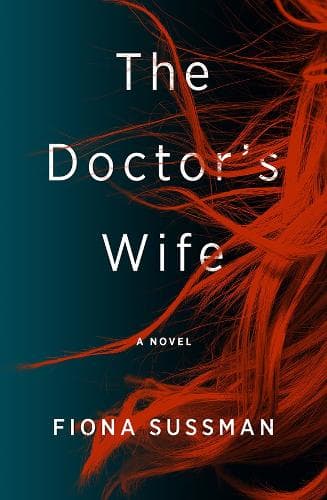Review: The Doctor’s Wife
Reviewed by Jessie Neilson
This superb crime novel by South African-born writer and former doctor Fiona Sussman is set in her base of Auckland. Using an array of third person accounts, Sussman depicts how a murder devastates all those close to the victim, as well as exploring their individual involvement. She keeps the reader firmly out of the know for much of the book until suddenly clarity dawns. Awareness for the characters, though, is a much more insidious affair and we watch them closely as they try to pull black and white apart from the smothering greys of doubt.
Browns Bay is a popular and scenic site, bookended by high cliffs. One unremarkable day the body of wealthy Tibbie Lamb is found, swirling at its base. Murder or suicide seems to be the dilemma and while police reach a preliminary verdict, this is soon overturned. The main plot concerns four long-time friends: couple Stan and Carmen Andino, potter and freelance writer, and Austin and Tibbie.
While Austin is a doctor of high standing in the community and his wife independently wealthy, Stan and Carmen are constantly plagued by financial constraints. There are distinct personality differences: Stan is casual of attire with a ‘she'll be right’ attitude and not bothered by his ‘nebulous sagginess,’ while for Austin, a business shirt and chinos are the ‘first pins on the corkboard of an ordered day.’ The women, too, differ. Tibbie was always elegant and self-contained, whereas Carmen would supply the irreverence and humour to turn their get-togethers into a jovial time for all.
Tibbie's death hits them - and the local community - hard. Two detectives take on the case, as do other individuals. There is young Eliot, the love of his mother's life and gatekeeper of their humble castle despite his significant mental disabilities; war veteran Mr McDougal, now in his 90s, and an arc of grieving family members and friends. However, Tibbie is not the only concern. Carmen, she of the irrepressible wit, is near death's door, diagnosed several months prior to her friend's death with brain tumours, and now on anti-psychotics and a raft of other medication. Paranoia and nervous energy almost overnight replace her usual self.
Sussman outlines a comprehensive social environment, with drama cutting through the everyday. Where trust was once a given, friendships start to fray where an odd ‘foreignness’ has wedged itself in the space. Characters come under individual pressure both of the internal and external kind. There is the matter of Tibbie's property found about her person, a young man's obsessive and compulsive behaviour, various sexual attractions and, of course, Carmen's sudden erratic actions. When Stan finds her one day, bleaching their living room carpet while wearing only an apron, he realises they are in new psychological territory.
We view the effect of Carmen's illness on the twin boys, too, where each day now is an ‘evil lucky-dip.’ Sussman successfully shows how characters view their world and its people, especially those who are a little different, like Eliot. Of his mother he observes her present visage, with a haircut making her slightly less the puffer fish of the past. He memorises her language quirks, appreciating a ‘sliver of sea.’ With his need for extra visual cues, Eliot notices when she is out of sorts, her face unnaturally tight as if screws were turned unevenly.
Soon all the characters are watching their backs, taking any cues they can get, standing more brittlely. We too observe closely for which way the narrative strands will head. Sussman builds a world of restrained mannerisms with behaviour set to implode, where the new anxious energy abounds. Characters are described at one point as holding hands, linking together like a fragile chain of dolls. Who knows when it might all come tumbling down?
Reviewed by Jessie Neilson
